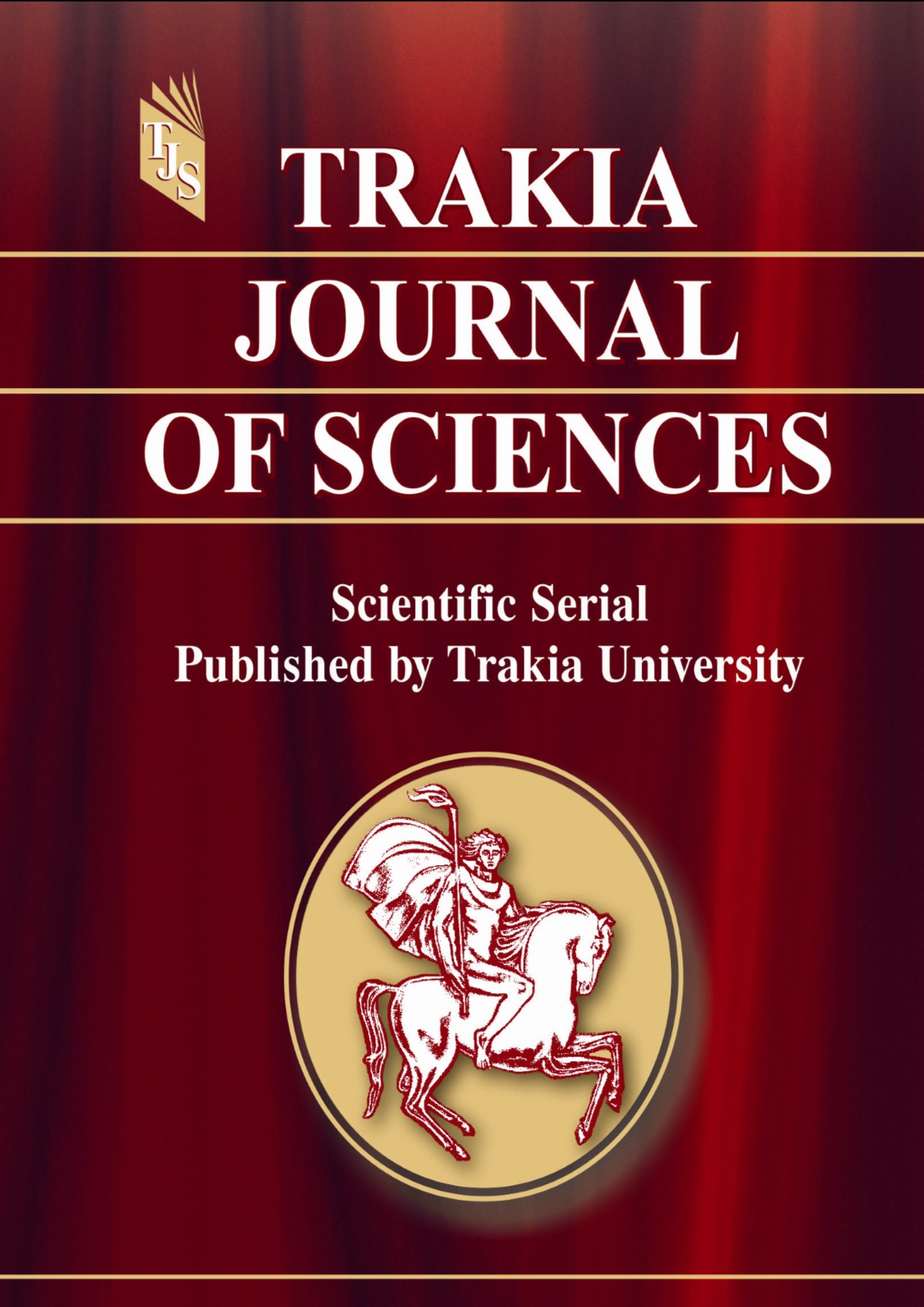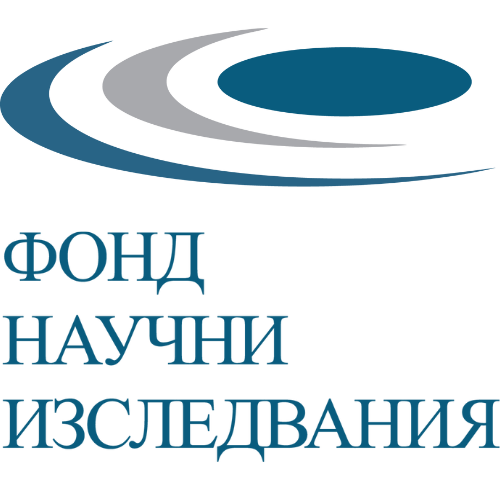SERUM ZINC CONCENTRATIONS IN PATIENTS WITH HIDRADENITIS SUPPURATIVA: A CASE-CONTROL STUDY FROM THE BULGARIAN EXPERT CENTRE
DOI:
https://doi.org/10.15547/tjs.2025.1.110Keywords:
zinc deficiency, hypozincemia, acne inversa, zinc supplementationAbstract
PURPOSE. To evaluate serum zinc (Zn) concentration in patients with hidradenitis suppurativa (HS) and its association with various demographic and clinical characteristics. METHODS. A single-center case-control study included 80 adults (40 HS patients and 40 age- and sex-matched controls) at the Bulgarian HS Expert Centre. HS patients were classified by disease duration, clinical phenotype, severity and comorbidities. Serum Zn concentration was defined as “hypozincemia” (<9 µmol/L), “normal” (9-18 µmol/L) and “hyperzincemia” (>18 µmol/L). RESULTS. Serum Zn concentration displayed a significant difference in patients and controls (mean rank: 47.64 vs 33.36, p=0.006). Hypozincemia was more common (p=0.02) in HS patients (84.6%). Serum Zn was significantly lower in Hurley stage III than in stage II (mean rank: 15.21 vs 26.34, p=0.002) and similarly, it was lower in severe HS than in moderate HS (mean rank: 17.3 vs 27.15, p=0.012) on the IHS4 scale. We found a significant negative correlation between hypozincemia and HS severity assessed by Hurley Stage (τc=-0.383, p=0.014) and IHS4 (τc=-0.343, p=0.022). No significant associations were found between serum Zn level and sex, smoking, HS family history, duration, or comorbidities. CONCLUSIONS. HS patients have significant hypozincemia compared to controls. A significant negative correlation between HS severity and hypozincemia was established.
References
Chen, W., & Plewig, G., Should hidradenitis suppurativa/acne inversa best be renamed as "dissecting terminal hair folliculitis"? Experimental dermatology, 26(6):544–547, 2027.
Zouboulis, C. C., Desai, N., Emtestam, L., et al., European S1 guideline for the treatment of hidradenitis suppurativa/acne inversa. Journal of the European Academy of Dermatology and Venereology: JEADV, 29(4):619–644, 2015.
Gulliver, W., Zouboulis, C. C., Prens, E., et al., An evidence-based approach to the treatment of hidradenitis suppurativa/acne inversa, based on the European guidelines for hidradenitis suppurativa. Reviews in endocrine & metabolic disorders, 17(3):343–351, 2016.
Hristakieva, E., Manuelyan, K., Darlenski, R., et al., Consensus for the treatment and diagnosis of hidradenitis/acne inversa. Dermatology and Venereology, 1:45-56, 2017.
Hendricks, A. J., Hsiao, J. L., Lowes, M. A., et al., A Comparison of International Management Guidelines for Hidradenitis Suppurativa. Dermatology, 237(1):81-96, 2021.
Zouboulis, C., C., Bechara, F., G., Benhadou, F., et al., European S2k guidelines for hidradenitis suppurativa/acne inversa part 2: Treatment, Journal of the European Academy of Dermatology and Venereology: JEADV, 19 December 2024 https://doi.org/10.1111/jdv.20472
Hawrysz, Z., & Woźniacka, A., Zinc: an undervalued microelement in research and treatment. Postepy dermatologii i alergologii, 40(2):208–214, 2023.
Arora, P. N., Dhillon, K. S., Rajan, S. R., et al., Serum Zinc Levels in Cutaneous Disorders. Medical journal, Armed Forces India, 58(4):304–306, 2002.
Vallee, B. L., & Auld, D. S., Zinc coordination, function, and structure of zinc enzymes and other proteins. Biochemistry, 29(24):5647–5659, 1990.
Cheng, Y., Chen, H., Aberrance of Zinc Metalloenzymes-Induced Human Diseases and Its Potential Mechanisms. Nutrients, 13(12):4456, 2021.
McClung, J. P., Iron, Zinc, and Physical Performance. Biol Trace Elem Res.,188(1):135-139, 2019.
Wessels, I., Maywald, M., & Rink, L., Zinc as a Gatekeeper of Immune Function. Nutrients, 9(12):1286, 2017. https://doi.org/10.3390/nu9121286
Lowe, N. M., Dykes, F. C., Skinner, A. et al., L., EURRECA-Estimating zinc requirements for deriving dietary reference values. Critical reviews in food science and nutrition, 53(10):1110–1123. 2013.
King, J. C., Brown, K. H., Gibson, R. S., et al., Biomarkers of Nutrition for Development (BOND)-Zinc Review. The Journal of Nutrition, 146(4):858S–885S, 2015.
Kodama, H., Tanaka, M., Naito, Y., et al., Japan's Practical Guidelines for Zinc Deficiency with a Particular Focus on Taste Disorders, Inflammatory Bowel Disease, and Liver Cirrhosis. International journal of molecular sciences, 21(8):2941, https://doi.org/10.3390/ijms21082941
Weismann, K., Høyer H., Serum alkaline phosphatase and serum zinc levels in the diagnosis and exclusion of zinc deficiency in man. Am J Clin Nutr, 41(6):1214-1219, 1985.
World Health Organization, Food and Agriculture Organization of United Nations. Vitamin and Mineral Requirements in Human Nutrition. 2004. https://www.who.int/publications/i/item/9241546123
Wieringa, F. T., Dijkhuizen, M. A., Fiorentino, M., et al., Determination of zinc status in humans: which indicator should we use? Nutrients, 7(5):3252–3263, 2015.
Hennigar, S. R., Kelley, A. M., McClung, J. P., Metallothionein and Zinc Transporter Expression in Circulating Human Blood Cells as Biomarkers of Zinc Status: a Systematic Review, Advances in nutrition (Bethesda, Md.), 7(4):735–746, 2016.
Hennigar, S. R., Kelley, A. M., Anderson, B. J., et al., Sensitivity and reliability of zinc transporter and metallothionein gene expression in peripheral blood mononuclear cells as indicators of zinc status: responses to ex vivo zinc exposure and habitual zinc intake in humans. British Journal of Nutrition, 125(4):361–368, 2021.
Cheng J, Bar H, Tako E. Zinc Status Index (ZSI) for Quantification of Zinc Physiological Status. Nutrients. 27;13(10):3399, 2021. doi: 10.3390/nu13103399. PMID: 34684398; PMCID: PMC8541600.
Knez, M., Pantovic, A., Tako, E., et al., FADS1 and FADS2 as biomarkers of Zn status - a systematic review and meta-analysis. Critical reviews in food science and nutrition, 64(11):3187–3205, 2024.
Dragolov, M., Manuelyan K., Zinc therapy in dermatology. Bulgarian Medical Journal, 3:31-38, 2023.
Poveda, I., Vilarrasa, E., Martorell, A., et al., Serum Zinc Levels in Hidradenitis Suppurativa: A Case-Control Study. Am J Clin Dermatol, 19(5):771-777, 2018.
Brocard, A., Knol, A.C., Khammari, A., et al., Hidradenitis suppurativa and zinc: a new therapeutic approach. A pilot study. Dermatology. 214(4):325-7, 2007.
Hessam, S., Sand, M., Meier, N. M., et al., Scholl, L., Combination of oral zinc gluconate and topical triclosan: An anti-inflammatory treatment modality for initial hidradenitis suppurativa. Journal of Dermatological Science, 84(2):197–202, 2016.
Molinelli, E., Brisigotti, V., Campanati, A., et al. Efficacy of oral zinc and nicotinamide as maintenance therapy for mild/moderate hidradenitis suppurativa: A controlled retrospective clinical study. Journal of the American Academy of Dermatology, 83(2):665–667, 2020.
George, M. M., Subramanian Vignesh, K., Landero Figueroa, J. A., et al., Zinc Induces Dendritic Cell Tolerogenic Phenotype and Skews Regulatory T Cell-Th17 Balance. Journal of Immunology (Baltimore, Md.:1950), 197(5):1864–1876, 2016.
Chvapil, M., Stankova, L., Zukoski, C., et al., Inhibition of some functions of polymorphonuclear leukocytes by in vitro zinc. J Lab Clin Med. 89:135–146, 1977.
Jarrousse, V., Castex-Rizzi, N., Khammari, A., et al., Zinc salts inhibit in vitro Toll-like receptor 2 surface expression by keratinocytes. European journal of dermatology: EJD, 17(6):492–496, 2007.
Kim, J., Ochoa, M. T., Krutzik, S. R., et al., Activation of toll-like receptor 2 in acne triggers inflammatory cytokine responses. Journal of immunology (Baltimore, Md: 1950), 169(3):1535–1541, 2002.
Hunger, R. E., Surovy, A. M., Hassan, A. S., et al., Toll-like receptor 2 is highly expressed in lesions of acne inversa and colocalizes with C-type lectin receptor. The British journal of dermatology, 158(4):691–697, 2008.
Gueniche, A., Viac, J., Lizard, G., Charveron, M., et al., Protective effect of zinc on keratinocyte activation markers induced by interferon or nickel. Acta Derm Venereol, 75:19–23, 1995.
Sainte Marie, I., Jumbou, O., Tenaud, I., et al., Comparative study of three nickel salts' in vitro inflammatory activity on keratinocytes. Acta Derm Venereol, 78:169–17, 1998.
Gammoh, N. Z., & Rink, L., Zinc in Infection and Inflammation. Nutrients, 9(6), 624, 2017. https://doi.org/10.3390/nu906062
Marreiro, D. D., Cruz, K. J., Morais, J. B., et al., Zinc and Oxidative Stress: Current Mechanisms. Antioxidants (Basel, Switzerland), 6(2):24, 2017. https://doi.org/10.3390/antiox6020024
Nosrati, R., Kheirouri, S., Ghodsi, R., et al., The effects of zinc treatment on matrix metalloproteinases: A systematic review. Journal of trace elements in medicine and biology: organ of the Society for Minerals and Trace Elements (GMS), 56:107–115, 2019.
Sugimoto, Y., Lopez-Solachez, I., Labrie, F., et al., Cations inhibit specifically type I 5 -reductase found in human skin. J Invest Dermatol, 104:775–778, 1995.
Jemec, G. B., Heidenheim, M., Nielsen, N. H., The prevalence of hidradenitis suppurativa and its potential precursor lesions. J Am Acad Dermatol, 35: 191–194, 1996.
van der Zee HH, Jemec GB. New insights into the diagnosis of hidradenitis suppurativa: Clinical presentations and phenotypes. J Am Acad Dermatol. 2015;73(5 Suppl 1):S23-6, 2015.
Hristakieva, E., Manuelyan, K., Hidradenitis suppurativa, Clinical phenotypes and associated diseases. Direct Services, Ltd., 2021.
Hristakieva, E., Manuelyan, K., Gancheva, T., et al., Hidradenitis suppurativa from the typical patient to the new clinical phenotypes. Clin Dermatol, 41(5):584-591, 2023.
Weir, S. A., Roman, B., Jiminez, V., et al., Burns, M., Hidradenitis Suppurativa and Five Key Vitamins and Minerals. Skin appendage disorders, 9(3):153–159, 2023.
Maxfield, L., Shukla, S., Crane J. S., Zinc Deficiency, June 28, 2023. https://www.ncbi.nlm.nih.gov/books/NBK493231/
Mokos, Z., Čagalj, A., Marinović, B., Epidemiology of hidradenitis suppurativa. Clinics in dermatology, 41(5):564–575, 2023.
Lavcheva, R. Modern markers for diagnosis, treatment and prognosis of Acne inversa (Hidradenitis suppurativa). 2021. Medical Faculty, Trakia University, Bulgaria, Doctoral dissertation.
Choi, E., Cook, A.R., Chandran, N.S., Hidradenitis Suppurativa: An Asian Perspective from a Singaporean Institute. Skin Appendage Disord., 4(4):281-285, 2018.
Lee. J. H,, Kwon, H. S., Jung, H. M., et al., Prevalence and comorbidities associated with hidradenitis suppurativa in Korea: a nationwide population-based study. J Eur Acad Dermatol Venereol, 32(10):1784-1790, 2018.
Skalny, A. V., Aschner, M., Tinkov, A. A., Zinc. Adv Food Nutr Res, 96:251-310, 2021.
Brocard, A., & Dréno, B., Innate immunity: a crucial target for zinc in the treatment of inflammatory dermatosis. Journal of the European Academy of Dermatology and Venereology: JEADV, 25(10):1146–1152, 2011.
Olechnowicz, J., Tinkov, A., Skalny, A. et al., Zinc status is associated with inflammation, oxidative stress, lipid, and glucose metabolism. J Physiol Sci, 68:19–31, 2018.
Farooq, D. M., Alamri, A. F., Alwhahabi, B. K., et al., The status of zinc in type 2 diabetic patients and its association with glycemic control. J Family Community MeD, 27(1):29-36, 2020.
Zupo, R., Sila, A., Castellana, F., et al., Prevalence of Zinc Deficiency in Inflammatory Bowel Disease: A Systematic Review and Meta-Analysis. Nutrients, 14(19):4052, 2022.
Yosaee, S., Clark, C. C. T., Keshtkaran, Z., et al., Zinc in depression: From development to treatment: A comparative/ dose response meta-analysis of observational studies and randomized controlled trials. Gen Hosp Psychiatry, 74:110-117, 2022.

Downloads
Published
Issue
Section
License
Copyright (c) 2025 Trakia University

This work is licensed under a Creative Commons Attribution-NonCommercial 4.0 International License.


